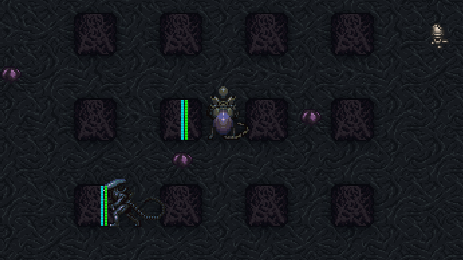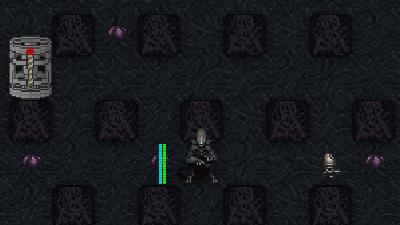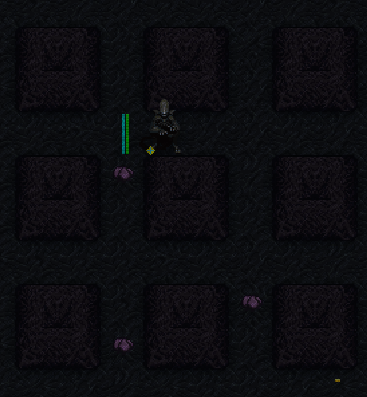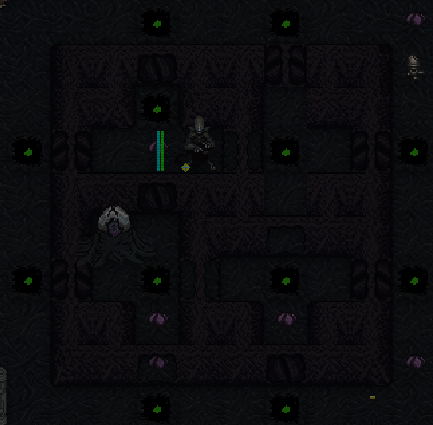TGMC:Guide to resin construction

|
This page is a part of the TGMC wiki.
TGMC is a project based on the CM-SS13 codebase. |
For drones, shrike, queen, hivemind, and hivelords.
Introduction
The only construction that xenomorphs can do is through resin. After you've weeded the surface to your heart's content, you now must fortify to ensure that xenomorphs don't eat too much lead.
Factors to consider for resin construction
An important thing to consider in constructing defenses for the hive is the structure's purpose that it is supposed to serve for xenomorphs and against marines. Given that both xenomorphs and marines have variance in toolkit, one must plan to ensure that xenomorphs get the most out of the resin structures.
- CQC opportunities: Is it a choke point meant to hinder marine progress and funnel them in one by one so they can be picked off by CQC xenomorphs?
- Is it a simple siege camp fortification, meant to protect sisters from marine fire and provide them a place of safety for resting and healing?
- Reducing Marines' Firing Lanes: Do these pillars, which provide cover for the CQC focused sisters, hinder the ranged and charging based sisters
- Xenomorphs' Lanes and Firing Lanes: Do these long unhindered lanes create perfect places for the ranged sisters, or do they cause horrible walls of automatic fire that hinder the CQC sisters?
These are important things to think about when creating the best structure for the needs of the hive, and remember, different structures can be used in different places, same as for certain caste of Xeno.
Firing lanes
Firing lanes are an important factor to remember when facing the marines in open combat. Marines maintain firing lanes in order to avoid friendly fire which can cause lots of casualties on the marine side. It is your job as a Hive-builder to make friendly fire happen as often as you can, make claustrophobic areas that make shooting randomly at shadows a bad option, have runners bait two groups of marines into firing at each other en masse and watch the tears flow. It's important to note that marine friendly fire is usually explosive in nature, considering here on TGMC we have aiming which reduces instances of friendly fire significantly (although still very prevalent despite efforts), so its best to build structures that hinder the use of grenades, grenade launchers, and rockets launchers.
Crusher/charge lanes
An important fact to keep in mind is a Crusher needs 7 tiles to begin charging while Bulls need 5.
Charge lanes or crusher lanes, are clear of obstruction paths of tiles that crushers, and bulls, use to gain momentum and speed for their charges in order to combat marines in the case of the bull, or smash barricades in the case of the Crusher. It's important to keep these lanes clear as Crushers and Bulls need as much space as possible to build speed for damage during their charges.And important thing to keep in mind, Crushers can, and usually will, knock down your structures in order to give themselves a clear lane for charging.
CQC chokepoints
A important thing to understand as a xeno, 9 times out of 10, a single xeno, will defeat a single marine in CQC. A good hive builder keeps this in mind when designing specialized chokepoints in order to funnel marines into close quarters. The most common of these type of structures are the bigger brothers of the Killer Pillars, known as the columns of doom, these are 2x2 thick pillars designed to absorb gunfire, and hide a xeno sprite behind, until an unga over extends and gets pounced upon and nuzzled SAVAGED BRUTALLY by a Rouny. Usually, you want to have a entry way at least 2 tiles wide, this keeps the chance of sisters body blocking each other to death to a minimum and helps funnel marine pushes to only a few men at a time, giving xeno retreats a breather and helping sisters vanguard certain points.
Preparation time
From the beggining of the round, you'll have a bit under 25 minutes on average to build. During preparation time you will have quickbuild, which is a number of shared points shared between all xenomorph builders that is used when building structures, similar to special resin structures except quickbuild points are GONE after quickbuild so you better make sure to use them. During preparation time using the quickbuild points you may build on any tile you can see so long as it isn't in an rea you aren't allowed to, like around LZs. Spamming things is generally frowned upon because it can eat up those quickbuild points very fast, and you should generally only be using quickbuild on walls. After 20 minutes, you will be stressed for time as those quickbuild points are at risk, and you must spam those remaining points as quickly as possible or lose the rest of your points. There is also a minimum distance from landing zones that you may build, but you may still lay eggs and the such around those as they do not count as buildings.
Disliked Patterns
There are a few types of builders who are especially hated, not just for wasting quickbuild but also wasting everyone's time.
First off there is the brick, it is exactly what it sounds like and it is a pain for xenomorphs more so than it is to marines. Resin walls are inherently pretty weak, and it only takes marines a short amount of time to call over their flamer friends to take down an entire brick in simply seconds. The best defensive is not the building itself, but the tools that walls provide by allowing you to take cover behind them and get closer to the enemy without being hit.
Secondly, there is the tunnel. The tunnel is a close relative to the brick and they can vary drastically. They look like a brick after some fed-up xeno decided to tunnel through it with the worst possible aim as to where they were digging, sometimes even in circles for zero reason. They're actually subjective as to being worse or better than a brick, since they at least allow you to pass through them they generally don't allow xenos to fight in them.
Thirdly are the random messes, some xenos like them, some do not, they aren't inherently bad but simply a matter of who built them. A great builder will make these look random, but in truth are planned out with the design of them being strong in some areas, and more manuverable in other parts. A bad builder will be completely random and restrict xenos movement with random dead-ends that are excellent entry points for marines.
There are many more disliked patterns but these are the most commonly seen. If you see someone building these then it is strongly recommended that you explain the faults in what they did, and to tell them how easily they will be taken down. In the end, avoid using these unless you need to spam something, as it may even kill other xenos.
Picture Examples
Just talking about hive defenses is not enough to learn, so let us go over some hive defense structures, and analyze their strengths and weaknesses so that you can make a good decision when building.
Exhibit A:
The classic Killer Pillars are a highly adaptable and easily replaceable defensive structure, designed to slow marine advances and absorb gunfire.
Pros:
High Adaptability: The Pillars main strength is that they can be quickly re-adapted to suit the current need of the hive, being able to form a wall, or a meandering funnel is a major strength of a good builder.
Non-Restrictive of Mobility:
The pillars provide a extreme advantage for the faster moving xenos such as Runners, Drones, and even the Hivelord, because they can make great use of their speed to weave through the pillars and strike the enemy from a another angle of attack.
Explosive Dampening: The pillars provide excellent protection from explosives because of their nature, a rocket is far more likely to hit one of the pillars and have its explosion mitigated by the surrounding pillars, lowering its effectiveness and saving sisters lives.
Cons:
Easily Destroyed:
Being singular pillars, with not much to back them up, the killer pillars are as easily destroyed as they're replaced, and a particularly fast rolling unga ball can quickly decimate the defense.
Clear firing lanes:
Depending on the pattern in which you are building the pillars, you are either giving marines clear fire lanes through it, from the north to the south, and to the east and the west, or you are blocking one direction, but giving them clear shooting through a another. We emphesize thinking about this when building fortifications and making sure areas where marines have a large area of fire are blocked off, while not hindering sisters.
Build time:
Depending on both map and situation, the construction of multiple pillars can be daunting, especially if you are the only builder class of the hive.(Which you really really shouldn't by the way, make that Queen work!) So you must pay attention to the time needed to build fortifications and what other sisters are doing.
Exhibit B:
The bigger cousin of the killar pillars, the Thriller Columns provide more cover for sisters to hide behind while also blocking significant line of sight for marines.
If there are no lane-using xenomorph castes in your hive then it may very well be best to offset every one of these columns as to prevent long-range weapons from hitting xenos moving through the pillars.
Pros:
Quite ressilient against attacks
Widows get their speed bonus here about 2/3rds the time they spend moving and is their favorite fighting area.
Somewhat adaptable, you can make a corner here or a jelly dispenser there but generally you'll be destroying numerous walls to make any significant changes.
Good for boiler/crusher lanes
Cons:
Medium manuverability, better than some others but not the greatest.
When retreating, long range weaponry can end up critting xenos and even killing a few if they aren't accompanied by a higher armor/health class to save them.
Exhibit C:
A structure I dub the "Defense Station", these are equipped with tightquarters for sisters to dip into, as well as fire suppression and protection in the form of multiple acid wells and a Resin Jelly Pod.



